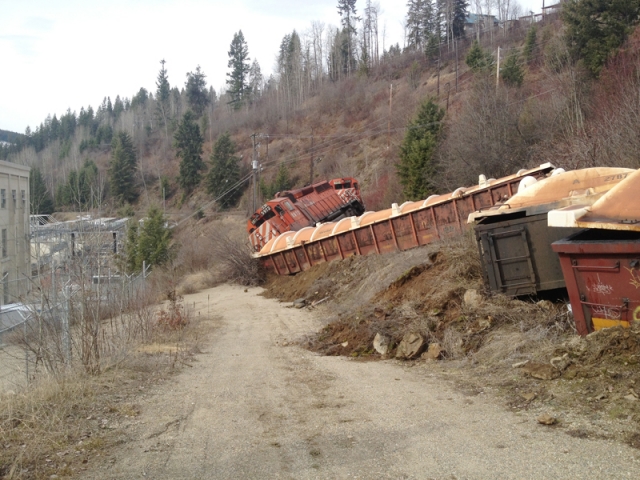Following the tragedy in Lac-Megantic, Quebec, is Nelson prepared for an emergency?
By Suzy Hamilton, The Nelson Daily
As further news emerges on the tragic aftermath of the derailed train car explosion in Lac-Megantic, Quebec, Nelsonites are asking, are we ready for an accident of this magnitude?
In Quebec, fifteen are now dead and approximately 50 people are still missing after the July 6 derailment of an empty runaway train carrying crude oil exploded, taking with it a major part of downtown Lac Magantic.
Hazardous goods travel through Nelson by rail to Castlegar’s Celgar and Teck Cominco in Trail on a daily basis.
“This is a CP mainline,” said RDCK fire chief Terry Swan. “There’s all kinds of hazardous products, chlorine, petroleum, liquefied natural gas.”
Swan said there are regional evacuation plans in place, “but it gets to a certain point and it overwhelms any small community to deal with it. Rural fire services depend on volunteers. We have to rely on the CP emergency response team. We do not have the resources to deal with it properly.”
Swan, who is a veteran firefighter of more than 30 years in the lower mainland, said that rail transport is overall a safe way to transport goods. “Fortunately (accidents like Lac-Megantic) are rare. When it does happen it’s very spectacular.”
“The consequences are very frightening. Life safety is our priority,” said Swan. “But then we have to wait for the experts to come along.”
Derailments in the RDCK region may be rare, but they are not unheard of.
A derailment caused by a rock slide along Kootenay Lake killed two train employees in 2008 when part of the train plunged 38 metres into the lake. In 2012, two more derailments occurred east Nelson and above the FortisBC Corra Linn Dam below the Bonnington community almost back to back.
“We do have definite concerns with train traffic,” said Nelson firefighter Scott Jeffery.
“Part of the problem is we don’t know what’s coming through.” Cars are not labeled, but are given numbers that indicate the kind of material transported, he said.
Jeffery said the number determines the emergency response needed, which could lead to a lag time.
Regardless of the lag time, the emergency response is coordinated with both RCMP and Nelson City Police and Search and Rescue. Quadrants target specific areas of Nelson for speedy evacuations.
“In some cases, it’s door to door,” he said.
The good news is that although Teck Cominco and Celgar are transporting hazardous goods, it’s a much lower volume than in other communities, for instance Salmon Arm. said Jeffery.
“Nelson is widely recognized for its level of pre-planning, “ he said, “but you can never say for certain. We are as ready as we can be.”
Contacted by email, Richard Deane, head of Teck’s Health and Safety in Trail said that Teck Trail Operations does not ship any materials that are listed as explosives under the Transportation of Dangerous Goods Act . “We do not ship any fuels by rail,” he wrote.
While Trail Operations does have extensive emergency training and capacity to respond to emergencies, he suggested that the rail lines, CP Rail and Kootenay Valley Railway also have safety plans.

























